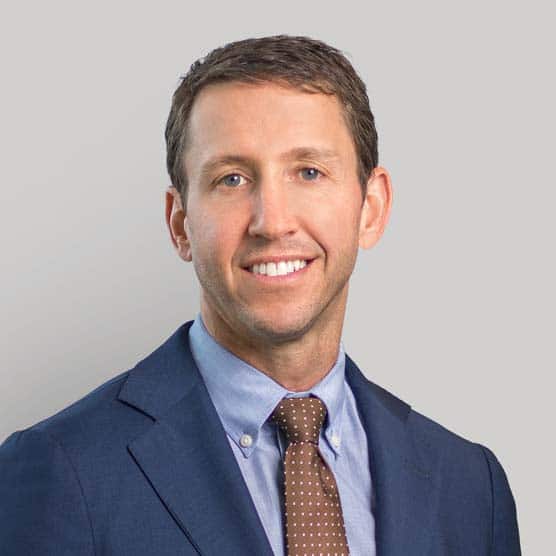The premier session at the 2025 Spring NIC conference featured MIT AgeLab’s founder and director Joe Coughlin detailing what the new generation of aging seniors desire in a community and the need for a fundamental shift in the way we envision senior living.
The aging baby boomers have a different outlook than the generations that preceded them, specifically regarding views about what to expect in the future. The previous generation of retirees expected, and accepted, a certain revving down of the lifestyle beginning in their 70s and 80s. They would move into assisted living, receive the occasional family visit, hope the grandchildren come, and they wouldn’t really complain.
The new generation of retirees (boomers and to an even greater extent the generations behind them) believe there is a product or policy for everything. They enjoy a curated lifestyle, and they expect companies to innovate and try to earn their business. They expect some type of technology, program, or policy to emerge in the coming years that improves the aging experience and makes the end of their life better. Vastly different expectations—yet the senior living model has remained largely the same.
“The gap between what the previous generation anticipated and what the new generation aspires to is the new white space for innovation,” Coughlin said.
There is immense opportunity for forward-thinking operators to redefine the game now and get out ahead of the silver tsunami with innovative answers that provide seniors with new choices.
For too many, seniors housing and care communities are seen as a last resort—a place to be avoided for as long as possible. Coughlin’s question: How can that avoidance mentality be replaced with an aspirational one where seniors are excited about this new chapter in their lives?
Destined
Providing context for the discussion, Coughlin argued there are three dominant stories right now for seniors housing and care. The first is “destined”—as in, our industry is destined for success. By 2034, there will be more people of retirement age than those who are not. The demographics are so favorable, we don’t have to worry about redefining anything, the thinking goes. Sure, we might modify and tweak, but the wind is at our back, and we are set for the foreseeable future.
Surely everyone in our industry has been guilty of having a “destined” mindset at some point. However, demography is not the be-all and end-all. Yes, we’ve all seen the PowerPoint slides depicting the robust demand and we’ve referenced them repeatedly when speaking of industry challenges. And although the demographics should provide us comfort, they shouldn’t blind us to other issues.
“Numbers don’t lie, but boy can they hide the truth,” Coughlin said. “The numbers look good, but the numbers are hiding a true different consumer that is expecting you to come up with a new story, and they’re not going to tell you what it is, and it’s up to you to have the courage and imagination to truly innovate.”
Delayed
The aging will stay in their homes for as long as possible, but eventually they will come. The problem with the inevitable success of the “delayed” mindset is the fact that technology keeps making it easier for seniors to use available services and apps for what Coughlin called “virtual assisted living.”
Approximately 75% of seniors want to age in their homes, and with companies like Walmart expanding in-home services, it is clear others are building pipelines to meet the expectations of aging in place and not waiting for our industry to provide the answers. With all that tech breeding new competitors, an effective counterstrategy is to be active and get in front of your target audience now so they will consider you later when their needs evolve.
Another important aspect of the delayed mindset is the assumption that our industry will eventually enjoy much of that boomer wealth they accumulated all those decades. Coughlin suggested the new trendline among that group is not about saving their money but spending it and “living while giving.” More retirees are traveling, taking excursions with family, donating to charities, and enjoying their money while they’re still fit and active, as opposed to stashing it away like the more frugal generations of the past. Unless seniors housing communities become an appealing destination for boomers, much of their liquidity might slowly leak out of the system before it even reaches our industry.
Desired
“Desire” represents the new story Coughlin and others are trying to promote—a dynamic, connected community that gives seniors purpose and makes them fulfilled. Doing so involves expanding and evolving the story of old age. Asking ourselves: how do we envision 100 years of good life? And then let the answers guide design.
It should be said there are top-tier operators and organizations who are already helping push the industry forward with innovations and improvements. But there remains much work to be done to not only meet, but surprise and delight that enormous wave of seniors, and the concern is an over-reliance on demographics and past success might hinder risk-taking that leads to big rewards.
Starting Now
So, beyond the buzzwords, what specifically can operators do to make their communities more appealing to seniors?
Even small things like using the term “member” instead of residents or clients can make an impact. He used the example of Costco, a beloved brand that promotes a shared experience. Being a member of something is more emotional and thus more aspirational.
Coughlin suggests operators look to become curators of a lifestyle as opposed to trying to provide everything on site. For example, if there is a popular chain of gyms in your area, look to collaborate with them in some form, as opposed to building your own subpar exercise room. “Curation, range, and branded partnerships are part of the new story,” he said.
Another potential element comes back to the idea of evolving the story for the last third of life. Coughlin points out the lack of rituals and markers for that period. “It seems like once you hit 65, you’re done with rituals. Where’s the downsizing party?” Coughlin asked.
It is a massive challenge, no doubt, but no group is better positioned to find the answers than those who know the industry and understand aging in ways others do not. Those who combine imagination and courage with a keen understanding of the new senior might just find themselves redefining the seniors housing experience.

